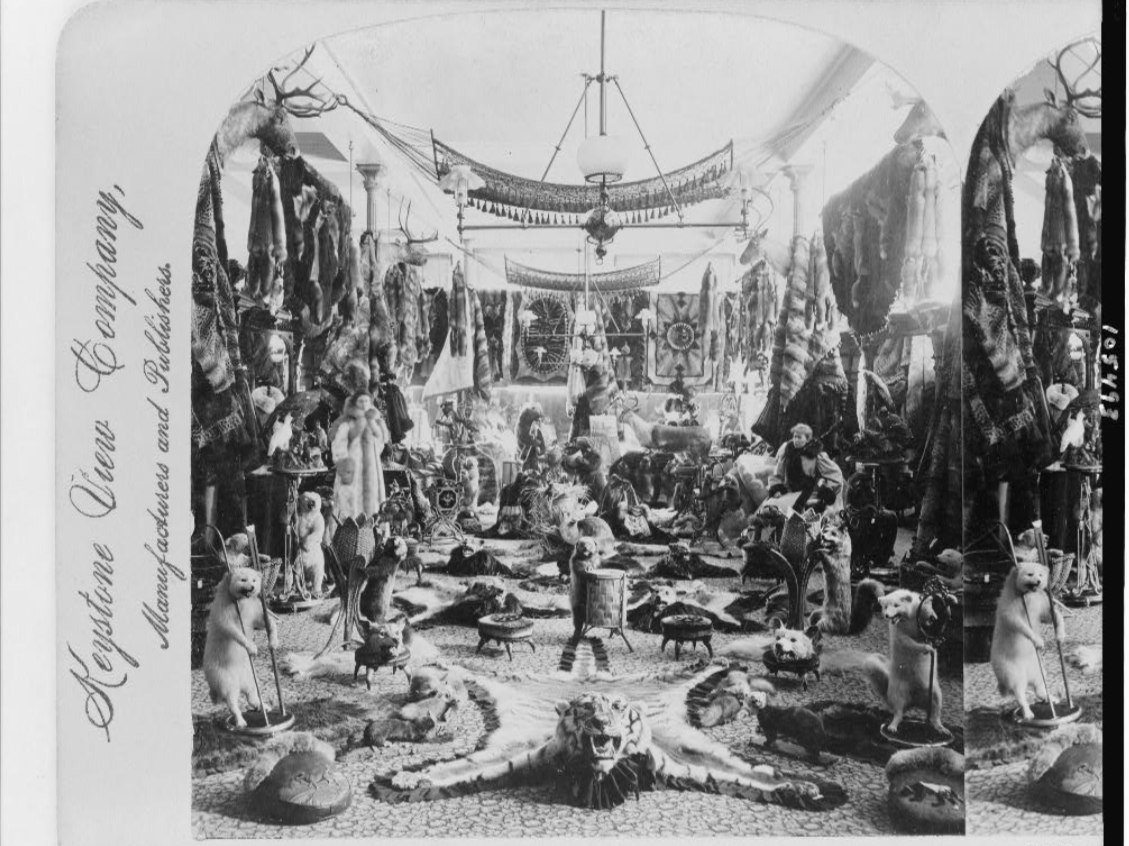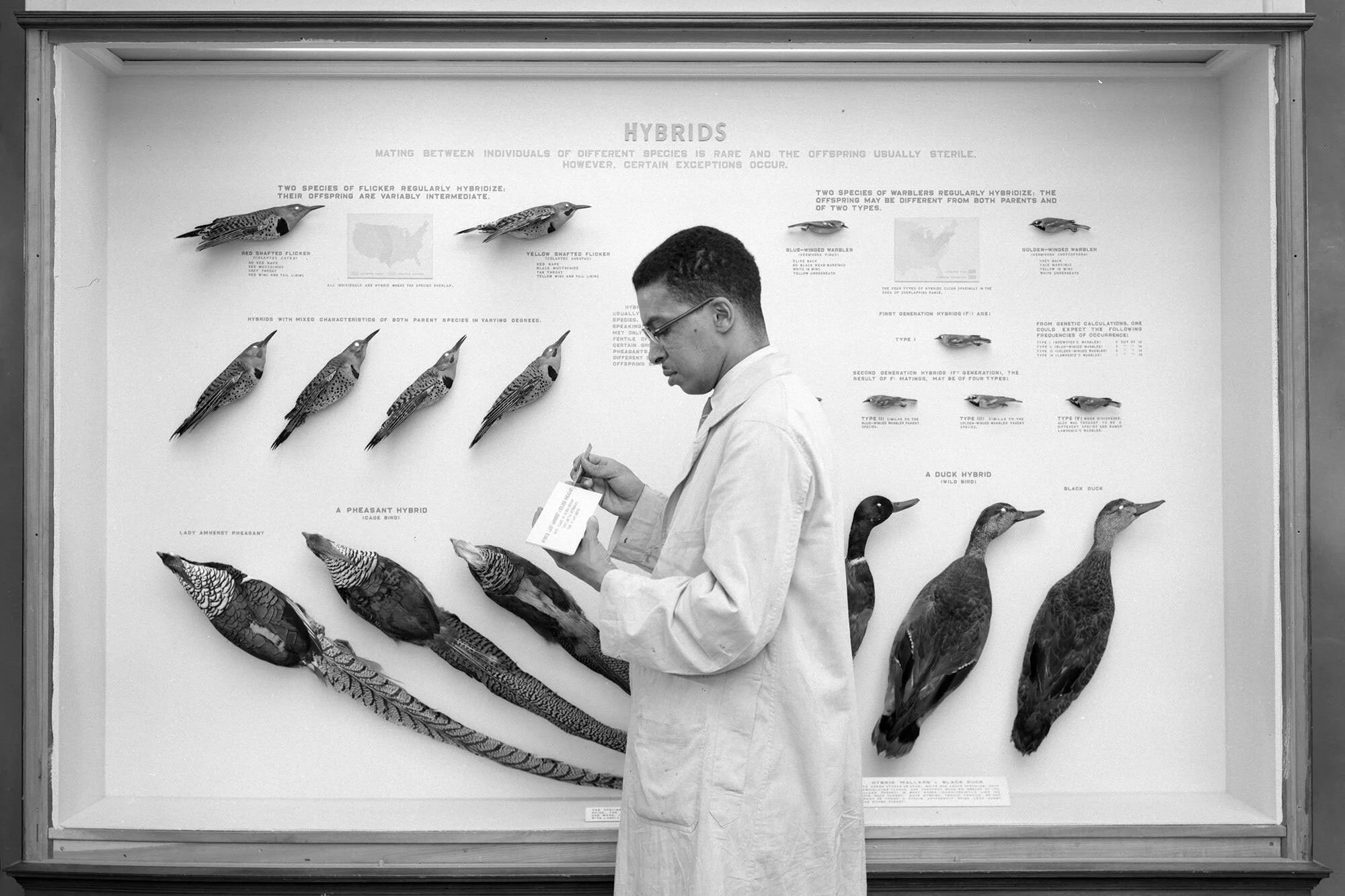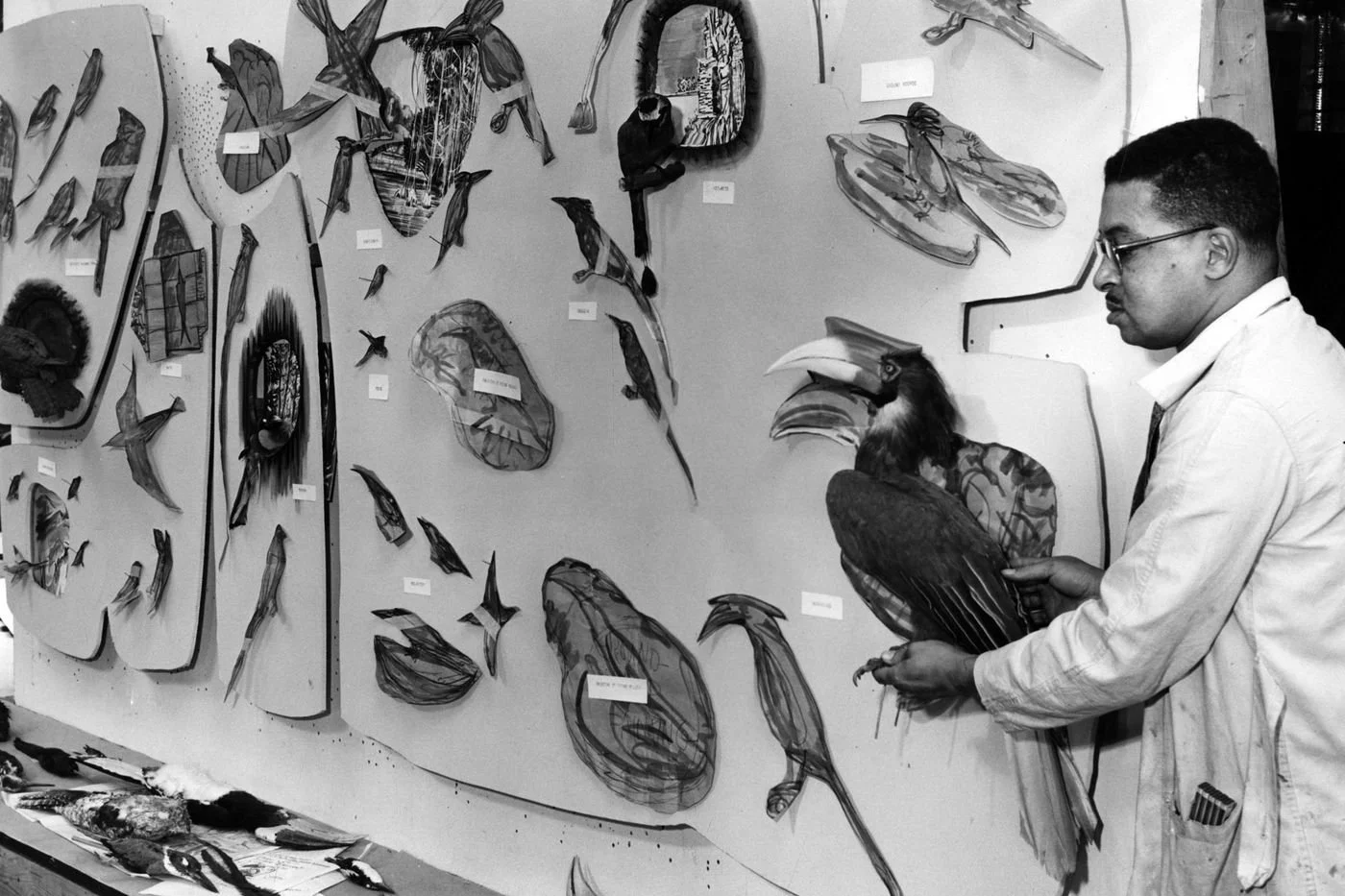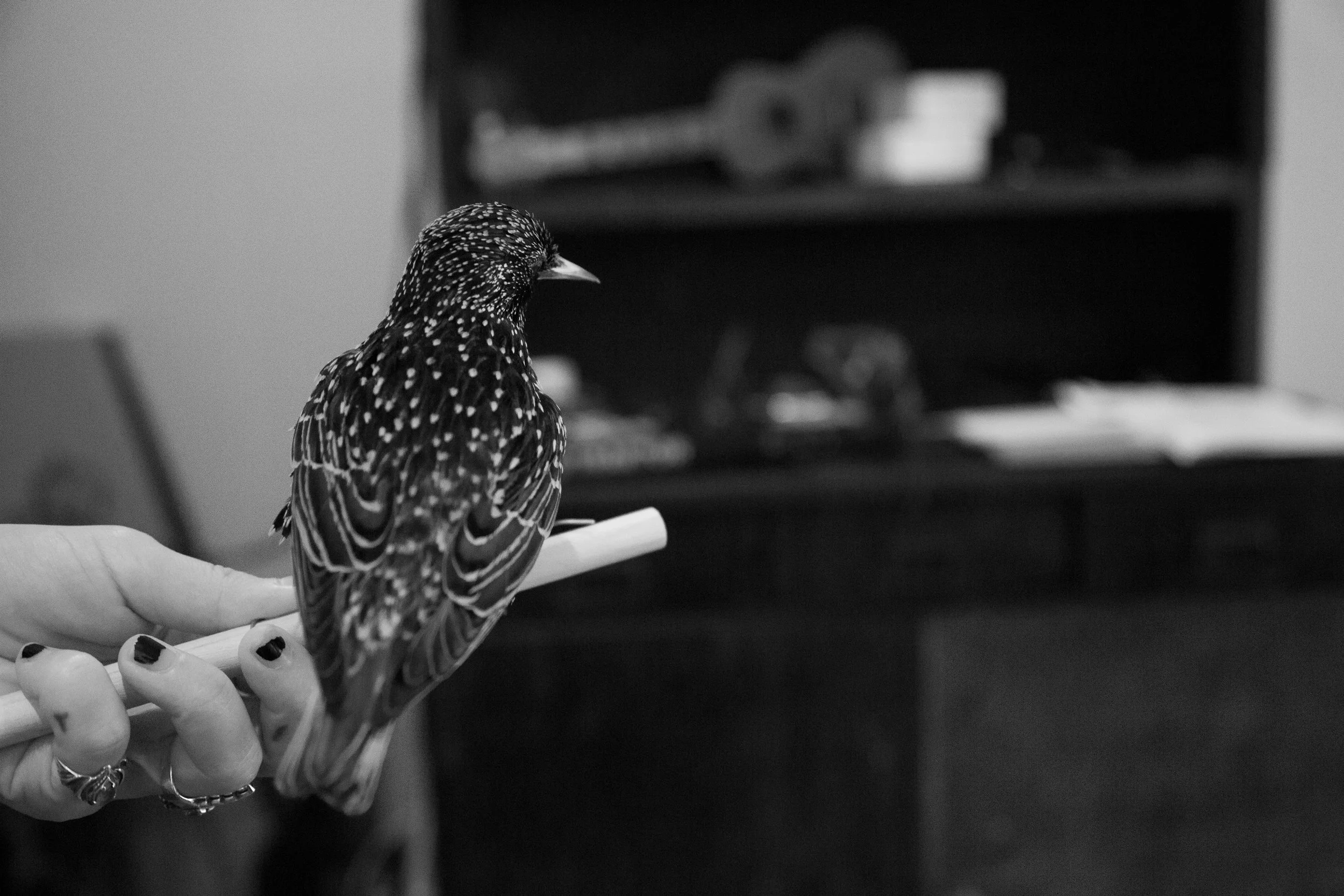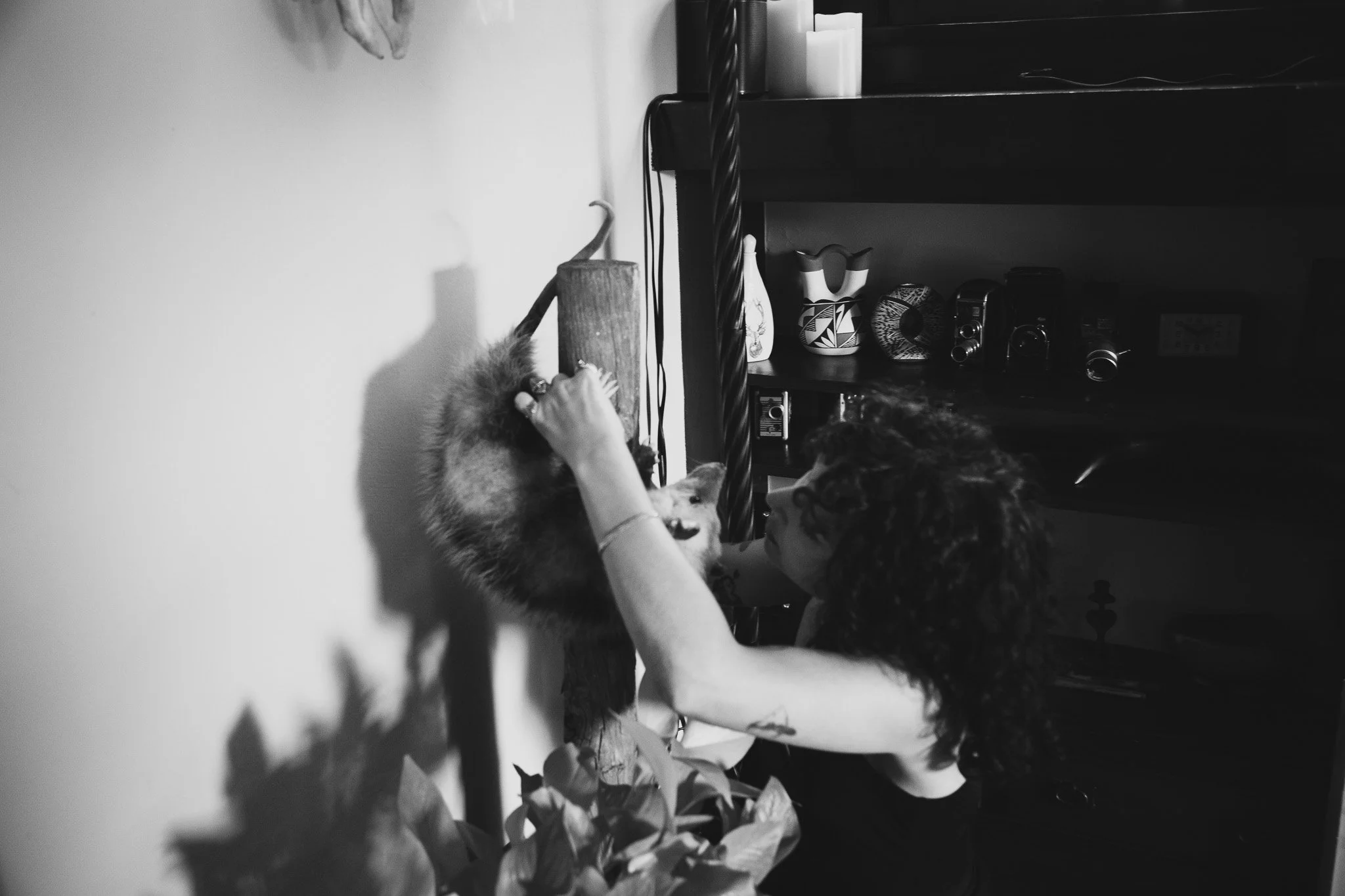What Is Taxidermy?
Taxidermy is the art and science of preserving an animal's body in a lifelike appearance after death, typically through techniques that involve careful skinning, sculpting, and mounting. This practice serves various purposes, including educational and scientific uses, as it allows for the study of anatomy and species characteristics in a tangible way. Additionally, taxidermy can create stunning displays that celebrate the beauty of wildlife, making it a unique form of art that brings a piece of the natural world into our homes or educates the public at museums. Through taxidermy, we can also foster a greater appreciation for biodiversity and conservation efforts by highlighting the intricate details and behaviors of different species.
“Black-crowned night heron”; photo by E.S.M. Haines in 1870 for Hurst’s Stereoscopic Studies of Natural History. Image retrieved from the Library of Congress.
Museum taxidermy has a rich history that dates back to ancient civilizations, where the practice of preserving animals for educational and ceremonial purposes began. The first known instances of taxidermy can be traced to ancient Egypt, where animals were mummified as offerings to deities or to accompany the deceased in their afterlife. However, it was during the Renaissance, with the rise of natural history museums in Europe, that taxidermy evolved into a respected scientific practice. By the 18th and 19th centuries, taxidermy had gained prominence as an artistic endeavor, with meticulous techniques developed to create lifelike displays that reflected natural habitats and showcased the diversity of wildlife.
While there is a rich history that intertwines with the natural history and scientific efforts, taxidermy has a dark past as well. Fashion trends of the 18th and 19th centuries, particularly the demand for exotic furs and feathers, significantly contributed to overhunting and the decline of numerous wildlife populations. The popularity of elaborate hats adorned with bird plumes and animal pelts drove commercial hunting and taxidermy preservation to unsustainable levels. These practices, coupled with the trophy hunting culture, skewed public perception of taxidermy as merely an ornamental or commercial endeavor rather than a scientific and conservation-focused practice.
As critical species faced severe population declines, conservation laws and regulations were introduced to curb overexploitation. Notable examples include the Migratory Bird Treaty Act and the CITES convention, which aim to protect wildlife from indiscriminate hunting and trafficking. These measures helped shift the understanding of taxidermy from a contributor to animal endangerment toward a tool for education, research, and wildlife preservation.
“Laliberte’s fur parlor—the finest in the world”, 1890. Image retrieved from the Library of Congress.
“The cruelties of fashion - ‘fine feathers make fine birds’”, 1883. Image retrieved from the Library of Congress.
The establishment of natural history museums played a pivotal role in advancing taxidermy as an educational tool. As exploration and colonization expanded, the collection and preservation of exotic specimens became popular among wealthy patrons and museums. Renowned taxidermists like Carl Akeley transformed the craft by introducing innovative methods, which included the use of glass eyes and realistic poses, thereby elevating taxidermy to an art form. As these museums expanded their collections, they not only provided valuable insights into biodiversity but also sparked public interest in the natural world. Today, museum taxidermy continues to evolve, balancing the art of preservation with ethical considerations in an effort to educate and inspire future generations about the importance of wildlife conservation. Carl Cotton's contributions to the field of taxidermy are noteworthy, especially through his work at the Field Museum. His expertise and innovative techniques have not only advanced the craft but have also played a pivotal role in the preservation and presentation of specimens for educational purposes. Cotton's commitment to the art of taxidermy reflects a deep respect for biodiversity, ensuring that each creation serves as both a scientific resource and a tribute to the natural world. His legacy continues to inspire taxidermists and naturalists alike in their pursuit of excellence and authenticity in this unique art form.
Carl Cotton working on a display of hybrid birds.
Photo from the Field Museum, “Finding Carl Cotton”.
Handling a hornbill for display.
Photo from the Field Museum, “Finding Carl Cotton”.
Taxidermy today is a vibrant and dynamic community that intertwines the principles of conservation, art, and science. The field has evolved significantly, marked by a growing recognition of the importance of preserving biodiversity and educating the public about the natural world. Taxidermy competitions not only showcase the talent and craftsmanship of skilled practitioners but also serve as vital platforms for learning and knowledge exchange. Seminars and workshops enable artists and scientists alike to collaborate and share their expertise. As the global taxidermy community becomes more interconnected, the diversity within the field has flourished, with an increasing number of women and LGBTQ individuals stepping into prominent roles.
While the rich history of taxidermy continues to inform contemporary practices, the industry is also adapting to future challenges and opportunities. Museum bird preparation and traditional taxidermy are distinct yet interrelated methodologies that cater to specific needs. Museum preparation focuses on the scientific and educational value of specimens, meticulously preserving their historical and environmental context for future study. The incorporation of various materials to maintain structure without sacrificing accuracy reflects a balance between art and conservation. In this ever-evolving field, the emphasis on inclusivity and collaboration fosters a sense of community among taxidermists, uniting them in their mission to celebrate and protect the wonders of the natural world.
“The red-shouldered buzzard”; photo by E.S.M. Haines in 1870 for Hurst’s Stereoscopic Studies of Natural History. Image retrieved from the Library of Congress.
**Please note, we call this bird a red-shouldered hawk these days, but it is still the Buteo lineatus species.
In contrast, taxidermy employs a wet preparation process wherein the entire skin of the bird is cleaned through meticulous washing and rinsing procedures. The careful selection of bones is a significant part of this process, aimed at achieving artistic representation and high levels of realism. Taxidermists skillfully employ wires and sculpted bodies, in addition to glass eyes, to exert complete control over the pose of the bird. This creative approach allows skilled artists to craft lifelike representations that can be displayed not only in homes but also in galleries or exhibitions. While museum specimens prioritize the preservation of scientific data and environmental context for research purposes, taxidermy focuses on capturing the essence and natural beauty of the bird for aesthetic appreciation. Each method plays a vital role in its respective field, advancing both scientific knowledge and artistic expression, thus contributing to a deeper understanding and appreciation of the natural world.
Domestic canary (Serinus canaria domestica).
Luzon bleeding-heart doves (Gallicolumba luzonica).
European starling (Sturnus vulgaris).
Virginia opossum (Didelphis virginiana).
All four photos are from an interview and photo series I was a part of in the newest issue of Orpheus Magazine, The Magic Theater. Photos were taken by Juliette Sandoval. If you want to see the entire photo series and learn more about me, check out the article Paloma’s Birdsong.
Taxidermy is the meticulous art of preserving and displaying animals in lifelike forms, blending scientific principles with artistic expression. As this once-dying art form experiences a resurgence, it represents not only an appreciation for the beauty of the natural world but also an opportunity to engage with it in meaningful ways. In a society increasingly disconnected from nature, embracing taxidermy invites a deeper understanding and respect for wildlife, fostering a sense of stewardship that extends beyond the studio.
Everyone can play a role in this movement, whether through taxidermy, painting, photography, or any other form of creative expression. By nurturing a passion for the natural world in our own unique ways, we contribute to its preservation and celebrate its inherent beauty, inspiring future generations to cherish the wonders that surround us.
—
If you want to get started in taxidermy, check out my Patreon community for in-depth tutorials, tool lists, detailed instructions, and videos. I release a mix of paid and free content!


